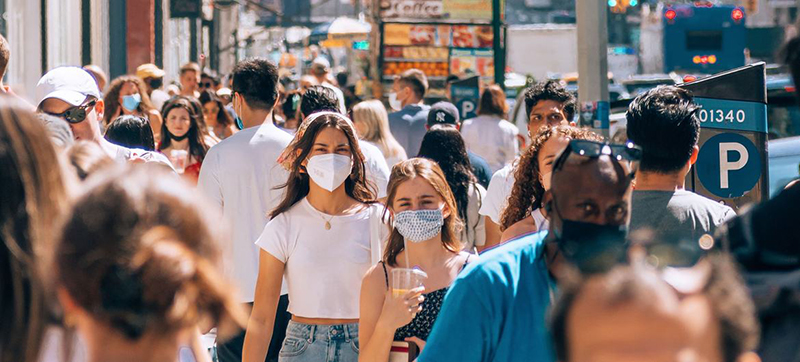 COVID-19
COVID-19
New York: Rising COVID-19 cases are not only putting further pressure on already stretched health systems and workers but also triggering an “increasing trend of deaths”, World Health Organization (WHO) chief Tedros Adhanom Ghebreyesus told journalists at the regular weekly press briefing on Tuesday.
He reported that the Emergency Committee on COVID-19 last Friday concluded that “the virus remains a Public Health Emergency of International Concern”.
And while acknowledging that we are in a much better position than at the beginning of the pandemic, he reminded that new waves demonstrate the COVID-19 pandemic “is nowhere near over”.
Combined challenges
Tedros outlined interlinked challenges presented now by the virus, beginning with sub-variants of Omicron, like BA.4 and BA.5, which continue to drive waves of cases, hospitalizations and deaths globally.
He observed that reduced surveillance, including testing and sequencing, has made it increasingly difficult to assess the impact of variants on transmission, disease characteristics, and the effectiveness of measures to counter the disease.
Tedros also pointed to diagnostics, treatments and vaccines that are not being deployed effectively.
“The virus is running freely, and countries are not effectively managing the disease burden based on their capacity, in terms of both hospitalization for acute cases and the expanding number of people with post COVID-19 condition, often referred to as long-COVID,” he said.
He highlighted a disconnect in COVID-19 risk perception between scientific communities, political leaders and the general public, describing it as “a dual challenge of communicating risk and building community trust in health tools and public health social measures like masking, distancing and ventilation”.
Advocating for support
The WHO chief argued that we should not take for granted tools that have prevented infections, hospitalizations and deaths and must continue to employ masking, improved ventilation and testing and treatment protocols.
He underscored the importance during next week’s G-20 finance ministers meeting, of governments financing WHO and the vaccine equity mechanism, the ACT-Accelerator; reviewing and adjusting COVID-19 response plans based on current epidemiology; reversing the reduction in surveillance and testing; and effectively share anti-virals.
“Planning and tackling COVID-19 should also go hand-in-hand with vaccinating for killer diseases like measles, pneumonia and diarrhoea,” Tedros underscored. “It’s not a question of either/or, it’s possible to do both”.
Battling monkeypox
Turning to monkeypox, the WHO chief told journalists in Geneva that there are currently 9,200 cases throughout 63 countries,
Next week the Emergency Committee for the disease will reconvene to examine trends, the success so far of countermeasures and next steps tackling the outbreak.
In the meantime, WHO continues to battle the stigma around the virus, coordinate vaccine sharing, and drive forward research and development.
“I again stress that we must work to stop onward transmission and advise governments to implement contact tracing to help track and stem the virus as well as to assist people in isolation,” Tedros highlighted.
Scale up genomic sequencing
Genomics – the study of a person's complete set of DNA or genome – have been “essential” throughout the COVID-19 pandemic in both initially detecting the virus and later, new variants, according to the UN health agency chief.
He highlighted the work of the WHO Science Council, which he set up a year ago. Its purpose is to provide advice on advances in science and technology that impact health and is “integral to the development of tests, treatments and vaccines”.
Citing WHO’s ten-year global genomic surveillance strategy, Tedros said that it covers disease detection, develops tests, and shares data for new health tools to be developed and deployed.
“Further, genomics has massive potential beyond pathogen surveillance, for human health,” he continued, urging countries to invest in scaling up genomic sequencing and bio-analysts training.
Support Our Journalism
We cannot do without you.. your contribution supports unbiased journalism
IBNS is not driven by any ism- not wokeism, not racism, not skewed secularism, not hyper right-wing or left liberal ideals, nor by any hardline religious beliefs or hyper nationalism. We want to serve you good old objective news, as they are. We do not judge or preach. We let people decide for themselves. We only try to present factual and well-sourced news.






